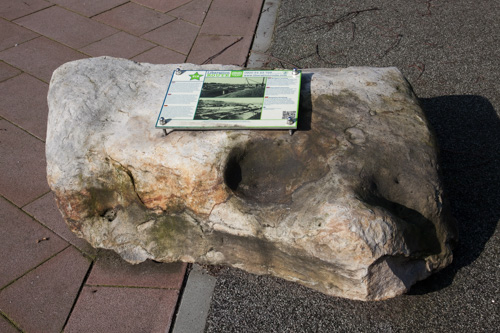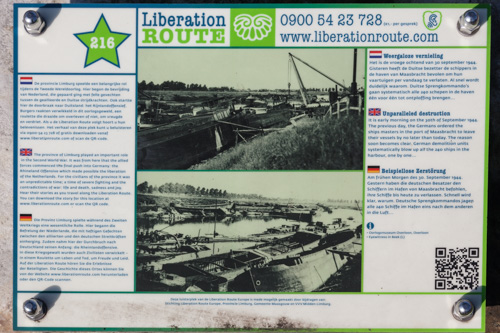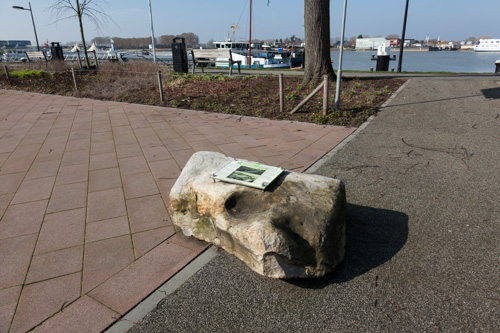Liberation Route Marker 216: Unparalleled destruction
Unparalleled destruction
It is early morning on the 30th of September 1944. The previous day, the Germans had ordered the ships masters in the port of Maasbracht to leave their vessels immediately. It soon becomes clear why. German demolition units systematically blow up all 240 ships in the port, one by one...
In September 1944, there were about 240 ships in the port of Maasbracht. Skippers took shelter here with their families. Sailing on the Maas had become too dangerous.
The Allies have already fired on ships on the Maas from the air several times. They assume that any ship now sailing could be a military transport from and for the Germans. The German occupation forces in Maasbracht may have ordered ships to leave the harbor and sail north, but no skipper would comply. After all, there is no more cargo to transport anyway and the risk of shelling from the air is too great.
For their part, the Germans in Maasbracht are afraid that large numbers of ships may fall into Allied hands. They block the entrance to the harbor by sinking two ships. With that, the other ships can no longer set sail and thus cannot be used against them, is the reasoning.
But the German occupier is not quite sure of his case and on September 29, 1944, takes a doldrums decision with major consequences. All boatmen are summoned to abandon their ships the next day. Therefore, in the early morning of September 30, more and more families go ashore with only a few possessions to take with them.
Soon the first explosions sound. German Sprengkommandos begin to systematically blow up all ships that day, even around Maastricht and on the Juliana Canal. A peaceful harmless armada goes down....
Audiospot - Unparalleled destruction
Liberation Route Europe is a certified Cultural Route of the Council of Europe. With hundreds of sites and stories in nine European countries, the route links the main regions along the advance of the Allied Forces in 1943-1945.
The entire route consists of themed routes that can be travelled by by hiking, walking, cycling and car. These routes pass numerous historical and interesting sites and tell stories from a multitude of perspectives that were important in the final phase of World War II.
Many routes feature listening spots, offering the opportunity to listen to a historical story at a location. In addition, many ‘Vectors of Memory’ have been placed, indicating that the passer-by is on one of the Liberation Routes.
The routes can be found on the Liberation Route Europe website or in the app through which many stories can also be listened to.
Do you have more information about this location? Inform us!
Source
- Text: TracesOfWar & Liberation Route Europe
- Photos: Arjan Vrieze
Nearby
Museum
Point of interest
Monument
- Memorial 'Ships Graveyard' - Maasbracht
- War Memorial Maasbracht - Maasbracht
- Memorial Wessem - Wessem
Cemetery
- Memorial Grave 'Jan' Johannes Jozef Hendrix - Brachterbeek
- Dutch War Grave Stevensweert Churchyard - Stevensweert
- Dutch war Graves Heel - Heel
Remembrance Stone
- Stumbling Stones Bovenstestraat 48 - Echt-Susteren
- Stumbling Stones Dokter Leursstraat 8 - Roermond
- Stumbling Stones Minderbroederssingel 30 - Roermond







